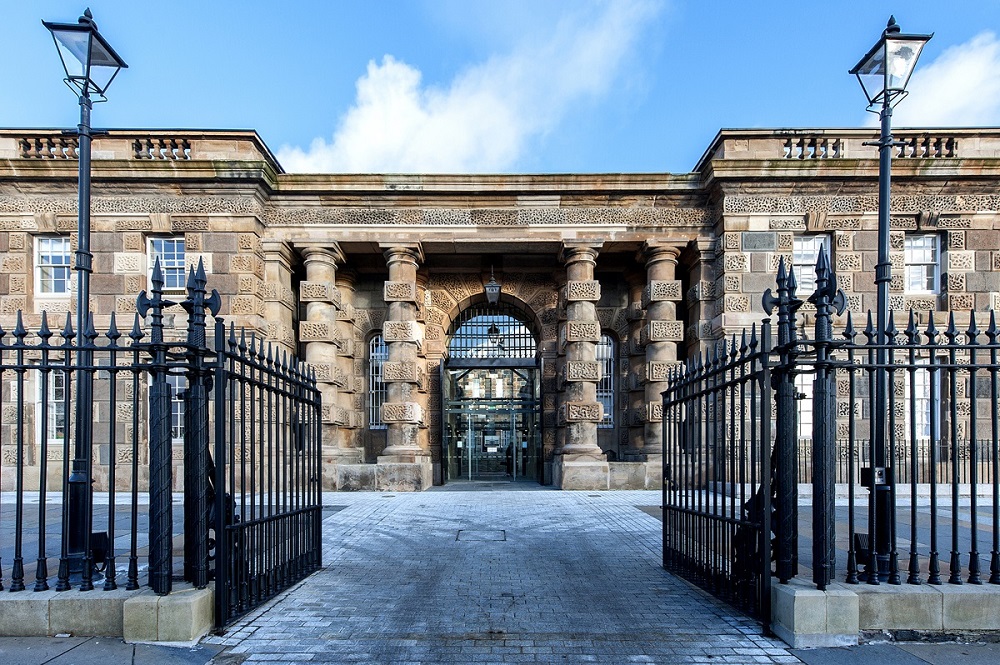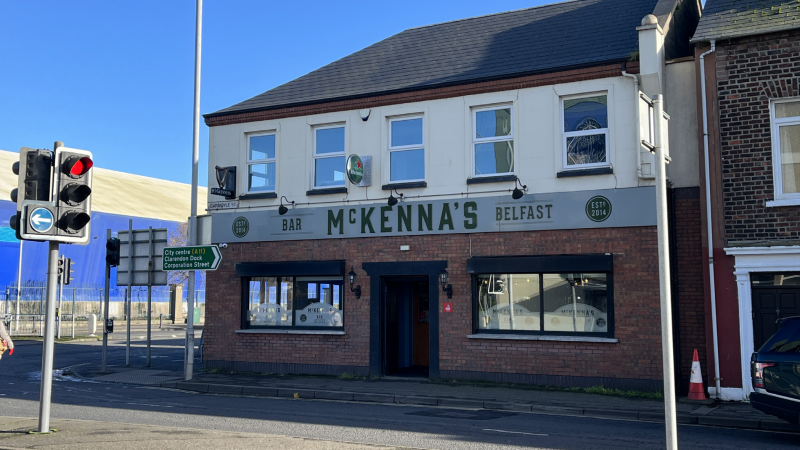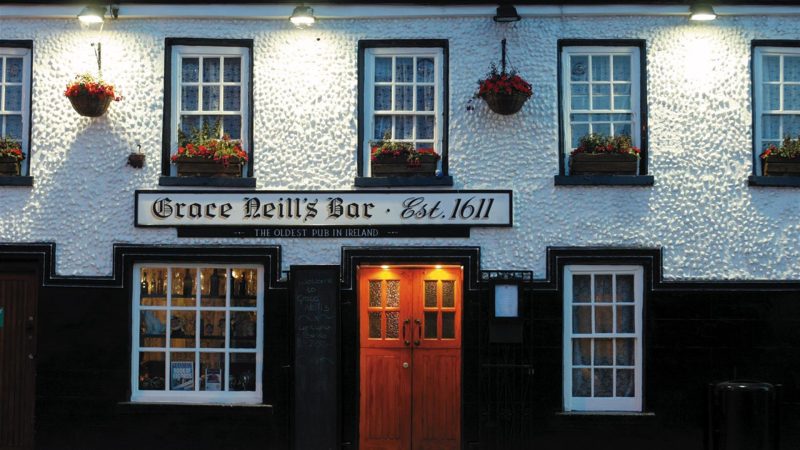Bright future for iconic Troubles prison

The colourful – and often bleak – history of the notorious gaol on Belfast’s Crumlin Road is helping the current operators of the site establish a thriving tourist trade and conferencing business on the site. Visitors and locals alike, it seems, are keen for peek inside ‘The Crum’…
Crumlin Road Gaol holds a special place in the memories of those who lived through Northern Ireland’s Troubles.
During its 150 years in use, the Victorian-era institution witnessed 17 hangings and provided temporary accommodation to a succession of men and woman whose notoriety was a product of those strife-torn times, including Eamon De Valera, Ian Paisley, Bobby Sands, Michael Stone and Martin McGuinness.
But that’s all a far cry from the current situation on the site. The bleak prison buildings still stand on the Crumlin Road, but unlike the equally famous courthouse across the way – which is slowly falling into ruin – the gaol is forging a new role for itself as an increasingly popular tourist attraction as well as an unusual conference and events destination.
Kieran Quinn and Phelim Devlin – both directors with Crumlin Road Gaol Ltd – are behind the prison’s modern reincarnation. Their company took possession of the gaol on a lease from OFMDFM at the end of 2012, following an investment of around £14m which saw the main reception areas, the circle and one of the wings at the prison opened to the public.
And speaking to LCN recently, both Kieran and Phelim indicated that in the two years or so since then, the pulling power of the once-notorious Crumlin Road Gaol has been sufficient to rival even the success of Titanic Belfast:
“Most of the people that we have coming in here think that the place is unbelievable,” says Phelim. “We’re actually number one on Trip Advisor in Belfast at the moment and we’ve been in the top three attractions since we opened.”
Despite the somewhat morbid nature of the surroundings themselves, it’s easy to understand the sense of curiosity and fascination that brings visitors through the gates of the venue.
HM Prison Crumlin Road stopped operating as a gaol in 1996 after more than 150 years of continuous service. Visitors to the site today can find out how women and children were once housed within its walls and how loyalist and republican prisoners were held in separate wings of the building. Seventeen people were executed at the prison – the first of them in 1854 – tourists are able to tour the condemned prisoner’s cell at Crumlin Road and see the execution chamber – the only fully operational facility of its kind still in existence in the UK.
But it isn’t just tourists and interested locals that visit the gaol. A full programme of entertainment events including live music concerts and paranormal tours mean that even after hours, the turnstiles at the venue are still clicking.
Conference business at the gaol is also increasing, particularly since the venue secured its liquor licence in September of last year. There have been four conferences held there so far, the most recent of them in January, and growing that end of the business is a specific objective for this year:
“We were targeted by OFMDFM to hold 100 conferences or events here in year one and we actually held a total of 440,” says Phelim Maguire. “But when we took the business on, we weren’t as focused on the conference side of things, we were more interested in the tourists. But we noticed very quickly that if someone booked a room for say, 40 people to meet, they were coming back again and booking bigger events. We realised that it was the unique nature of the building that was bringing people back. People were coming out of curiosity, to see what it was like in here, and that’s been a really great driver for the business.”
There are 34 people employed full-time to work on the site at Crumlin Road and almost as many again in part-time and casual workers.

Both Kieran and Phelim are aiming to see the gaol transformed into a “tourist hub” – and they will be assisted in that when Belfast’s Lottery millionaire, Peter Lavery, opens his boutique whiskey distillery in Wing A at the venue later this year.”
“Really, I think it’s the curiosity factor,” says Kieran. “People have been hearing about Crumlin Road Gaol in the news for 40 years and they just want to know what it’s like. Many of the people that come in here have had relations or friends that were held here.”
The pair hope to see a hotel established on the site within the next couple of years and they are continuing to develop new ideas, such as Jailbreak, a new charity fundraiser for companies that sees 40 people incarcerated at the Crumlin Road with escape only possible if enough sponsorship is raised.
“The gaol is a historic building and we have to work within the regulations whatever we do here,” says Phelim. “We can’t knock walls down or just expand wherever we like, there are limitations to what we can do, but we’re growing and expanding and now that we have our liquor licence, we intend to step things up.”
In April, a new catering centre is to be established at the gaol that will do away with the need to hire external caterers for functions:
“Prestige Catering from Belfast will be looking after that for us,” says Kieran. “This will give us more flexibility when it comes to doing events, we’ll also be able to offer larger events with a shorter run-in time and less preparation and hassle for everyone concerned.
“Within a couple of years, we would like to think that we would be able to offer accommodation on site. We would also like to have a tighter schedule of events coming up, we want people to know that they can rely on regular entertainment here. Also, with the development of Belfast’s ‘Cultural Corridor’, we want to be sure that we are a part of that, and we believe that we have a key role to play as part of the tourist offering in Northern Ireland as we go forward.”

Bleak reminder of times past
Opened in 1845, the black basalt and red sandstone Crumlin Road Gaol was designed by Sir Charles Lanyon and inspired by the cutting-edge layout of London’s Pentonville Prison. The gaol’s four Wings (A-D) radiate from a centre Circle and rise three storeys with a fourth basement level. Each small prison cell was built for single occupancy, though many housed up to four cellmates during the 1970s.
In the early years, inmates included women, children and petty criminals – some bound for Australia’s penal colonies. Suffragettes were also housed here before female emancipation following WW1. Throughout the Troubles, the gaol witnessed many breakouts, bombings and rooftop protests.
There is an underground tunnel that links the gaol with the courthouse across the road. It was deemed the safest method of transporting prisoners to and from their hearings.
Since its closure in 1996, the building lay derelict until 2012, when it re-opened as a tourist attraction and conference centre. It is now one of Northern Ireland’s most visited locations – more than 168,000 people toured the facilities last year alone.







